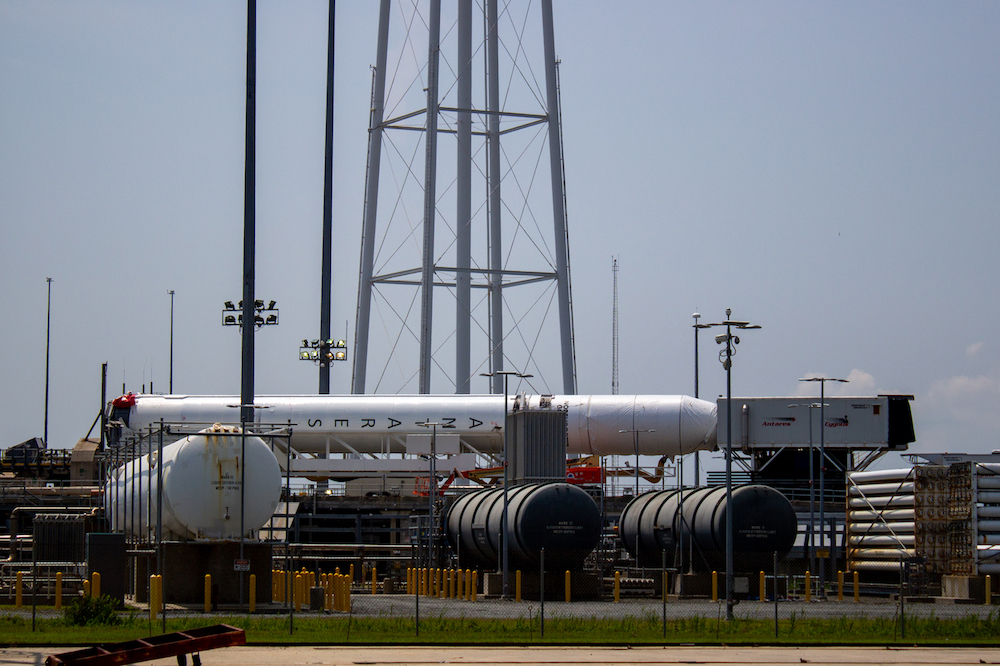
Since Russia’s invasion of Ukraine began, we have been following how it will affect Northrop Grumman’s capability to launch its Antares rocket. Northrop Grumman has finally announced its solution to unavailable components in a partnership with Firefly Aerospace to supply engines and a new first stage to the Antares 330 rocket.
To complete its manifest of launches of Cygnus spacecraft to the International Space Station, Northrop Grumman will use a brand new first stage for its Antares rocket. Firefly, an emerging SmallSat launcher, will provide the booster section and the engines to power it.
According to a Northrop Grumman announcement, the upgraded Antares first stage will be powered by seven Miranda engines. These are the same engines Firefly is developing for its Beta rocket; Beta also plans to have seven engines. These upgrades will significantly increase Antares’s mass to orbit capability. The rest of the Antares rocket will be provided by Northrop Grumman.
Antares rocket production halted by Ukraine/Russian war
Since Russia’s February invasion of Ukraine, Northrop Grumman hasn’t been able to receive any new booster tanks or engines for its Antares rocket. The boosters are produced by Yuzhmash, located in Dnipro, Ukraine. The company’s plant has reportedly been targeted by Russian attacks several times, and there is no word if any work is even being done at the plant anymore.
Worse, Antares uses two Russian RD-181 engines to power its first stage. When the United States began sanctioning Russian defense and aerospace industries, the former head of Rocosmos stopped selling any engines to US companies and pulled any support personnel from the country. This would impact both Northrop Grumman and United Launch Alliance. ULA’s CEO Tory Bruno stated he already has all the RD-180 engines the Atlas V needs to finish its manifest and will soon move over to its Vulcan rocket. Northrop Grumman, on the contrary, only had enough RD-181s for two more launches.
In addition to upgrading Antares, Northrop Grumman and Firefly will develop a new medium-lift rocket. The company has also purchased three Falcon 9 flights from SpaceX to potentially launch its Cygnus spacecraft while Antares is being upgraded.
Space Explored’s take
It is exciting to see the continuation of Antares launches from Virginia’s Wallops Island. The partnership with Firefly is an interesting choice. With the troubles it has faced technically, with a failed first launch attempt last year and the reorganization of its investors, this partnership brings a lot of trust to the company. In the long run, I think it makes a lot of sense. It keeps Northrop Grumman in the launch provider game and strengthens the talented engineers at Firefly to continue its progress towards success. We are all rooting for the success of Firefly and Northrop Grumman in this new joint venture.
The funny part about this is that when Dmitry Rogozin, the previous Director General of Roscosmos, placed his sanctions on US companies, he hoped it would cripple western launch capabilities. However, because of Russia’s aggressions, it has made the US’s launch industry much stronger. As a result, in the coming years, the US will no longer use Russian engines to power its rockets from US soil, with both the Atlas V and Antares planned to be replaced. Thanks, Rogozin. It turns out you were your own enemy all along.
FTC: We use income earning auto affiliate links. More.




Comments